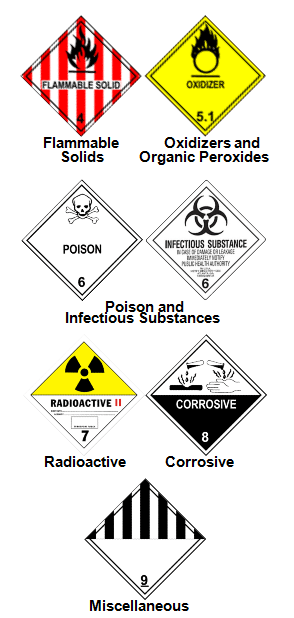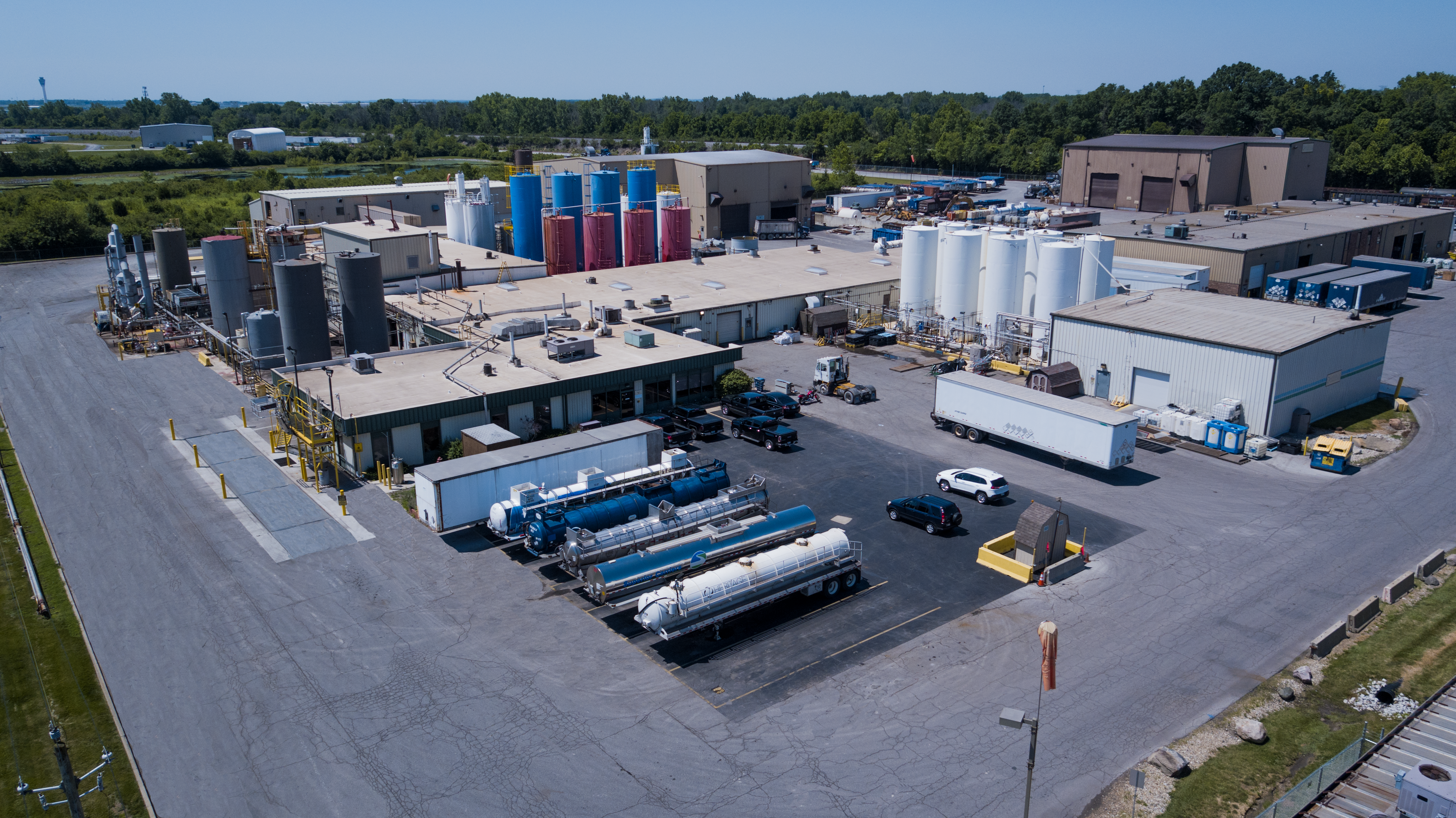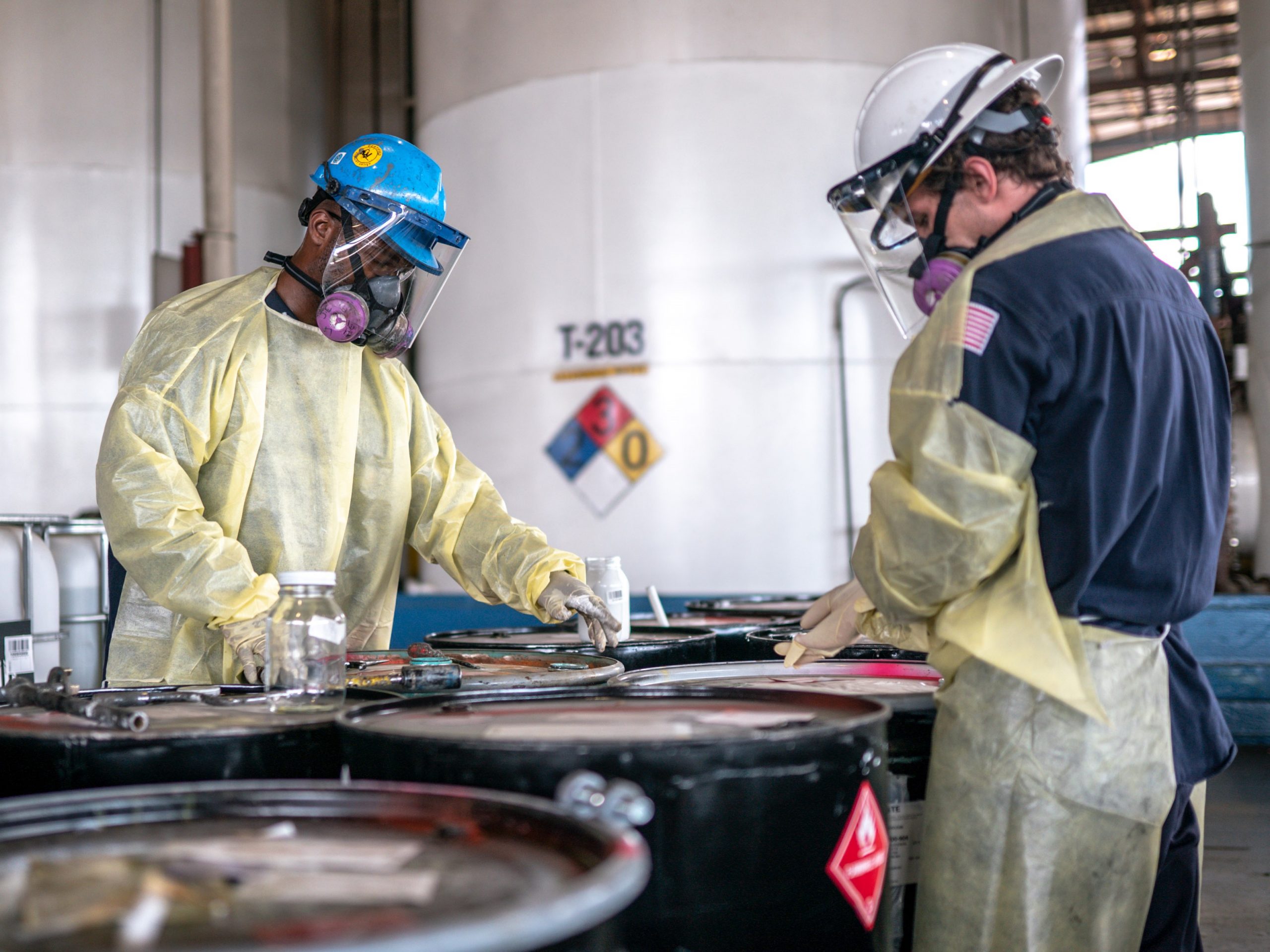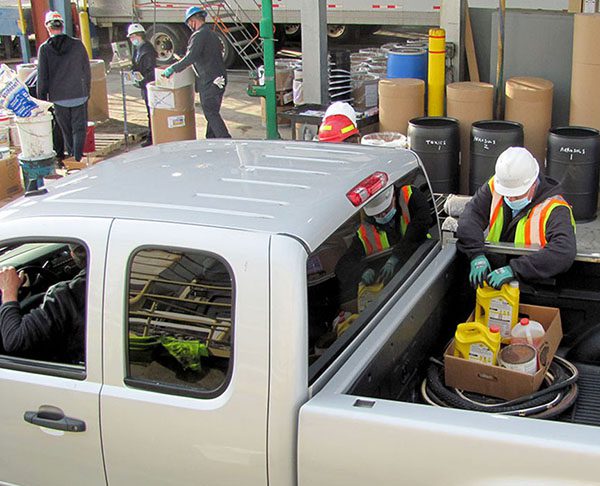
On Tuesday we covered the first three classes of hazardous waste classes including explosives, gasses, and flammable liquids. Today, we are going to cover the remaining 6 classes as well as the ORM (other regulated materials) definitions. To refresh your memory, a hazard class is the category of hazard assigned to a hazardous material under the definitional criteria of 49 CFR Part 173 and the provisions of the HMT at §172.101. A material may meet the defining criteria for more than one hazard class but is assigned to only one hazard class. That said, read on for the definitional criteria of classes 4-9.
Class 4
- Division 4.1 – Flammable Solid – Explosives wetted with sufficient water, alcohol, or plasticizer to explosive properties that when dry are Class 1 explosives and self-reactive explosives that are liable to undergo at normal or elevated temperatures a strongly exothermal decomposition caused by high transport temperatures or by contamination. Also included in this definition are readily combustible solids that may cause a fire through friction, have a burning rate faster than 2.2 mm (0.087 inches) per second, or any ignitable metal powders. Ref. 173.124(a).
- Division 4.2 – Spontaneously combustible materials – Includes pyrophoric material, which is a liquid or solid that even in small quantities and without an external ignition source can ignite within five minutes after coming into contact with air; and self-heating material, which is liable to self-heat when it comes into contact with air even without an energy source. Ref. 173.124(b).
- Division 4.3 – Dangerous when wet materials – A material that by contact with water is liable to become spontaneously flammable or to give off flammable or toxic gas at a rate greater than one liter per kilogram of the material per hour. Ref. 173.124(c).
Class 5
- Division 5.1 – Oxidizer – A material that may by yielding oxygen cause or enhance the combustion of other materials. Ref. 173.127(a).
- Division 5.2 – Organic peroxide – Any organic compound containing oxygen in the bivalent -O-O structure and which may be considered a derivative of hydrogen peroxide where one or more of the hydrogen atoms have been replaced by organic radicals, must be classed as an organic peroxide unless: it classifies as an explosive; the predominant hazard of the material is other than from an organic peroxide; the material is forbidden for transport; or the material will not pose a hazard in transport. Ref. 173.128(a).
Class 6
- Division 6.1 – Poisonous materials – A material, other than a gas, which is known to be so toxic to humans as to afford a hazard to health during transportation; or the material is presumed to be toxic because there is evidence of oral, dermal, and/or inhalation toxicity in laboratory animals. Ref. 173.132(a).
- Division 6.2 – Infectious substance or etiologic agent – A viable microorganism, or its toxin, which causes or may cause disease in humans or animals. Ref. 173.134(a).
Class 7
- Radioactive Material – Any material, or combination of materials, that spontaneously emits ionizing radiation, and having a specific activity greater than 0.002 microcuries per gram. Ref. 173.403.
Class 8
- Corrosive Material – A liquid or solid that causes visible destruction or irreversible alterations in human skin tissue at the site of contact, or a liquid that has a severe corrosion rate on steel or aluminum. Ref. 173.136(a).
Class 9
- Miscellaneous hazardous material – A material that presents a hazard during transport but is not included in any other hazard class. Ref. 173.140(a) and (b).
ORM – Other Regulated Materials – A material such as a consumer commodity that, though otherwise subject to DOT regulations, presents a limited hazard during transportation due to its form, quantity and packaging. Ref. 173.144.
More News From Heritage
-
Published Articles 8/2/22
How Safety, Maintenance, and Reliability Are Intertwined
VP of Health and Safety Jim Mangas discusses the importance of plant safety, maintenance, and reliability (featured in BIC Magazine July/Aug '22)
-
Blogs 7/28/22
Spotlighting Our Environmental Interns
Highlighting some of the wonderful interns we have at Heritage this year!
-
Blogs 7/11/22
Turning Hazardous Waste into an Alternative Fuel
In this blog we walk you through the process of fuel blending, where we can turn hazardous waste materials into a viable alternative fuel source.
-
Community News 6/15/22
2022 Habitat for Humanity Build
Our 12th annual Habitat for Humanity Build
-
Blogs 4/13/22
After Hurricane Ida, Our Port Fourchon Office Rebuilds
On August 28th, 2021, the Louisiana coast was battered by Hurricane Ida. This included our Port Fourchon Service Center, where the devastating hurrica
-
Community News 4/7/22
Heritage readies for Earth Day HHW collection in East Liverpool
Heritage Thermal Services is pleased to announce that its collection of household hazardous wastes for the East Liverpool area returns for 2022.
-
Published Articles 4/2/22
The Impact of Changing Conditions
VP of Health and Safety Jim Mangas discusses preparedness for unexpected conditions during a project. (featured in BIC Magazine March/April '22)
-
Blogs 3/11/22
International Women’s Week Spotlight – Rachel McGrogan
Rachel McGrogan speaks about her time as a Lab Chemist at Heritage.








